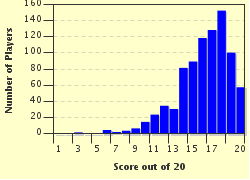Quiz Answer Key and Fun Facts
1. What happened on 28th June 1914?
2. What triggered Britain's entry into the First World War?
3. In the years before World War I, two major alliances formed in Europe - the Triple Entente and the Triple Alliance. Which group of countries formed the Entente?
4. In both world wars Germany used their U-Boats (submarines) to attack ships heading for Britain. What was the ultimate result of this in 1917?
5. After the November 11th armistice in 1918, that ended the actual fighting in World War I, a peace treaty was signed to settle post-war issues between the Allied Powers and Germany. What was this treaty?
6. An international organization was created after World War I in the hope of preventing further conflicts in the future. What was it?
7. Who was the person who rose to become leader of Germany in the 1930s?
8. What was formed after a civil war in Russia in 1922?
9. Benito Mussolini rose to become dictator of Italy in the 1920s. He then invaded a country in Africa that Italy had failed to conquer in the 1890s. What was it?
10. Japan rose to become a world power from about 1890 onwards. What was their excuse for dominating East and South-East Asia in the 1930s?
11. What started World War II?
12. The USA entered World War II on 7th December 1941. What was the immediate reason?
13. There were two sides of WWII, the Allies and the Axis. Which of these countries were the four main Allied powers at the end of 1941?
14. After the war in Europe was over with the fall of Berlin, the Allies focused their attention to Japan. Realizing that Japan wouldn't surrender easily, what did the USA do?
15. The League of Nations had failed to prevent World War II. What replaced it?
16. Why was the Cold War so-called?
17. Which of these was a key issue throughout the entire Cold War?
18. The North Atlantic Treaty Organization (NATO) was formed in 1949 to counter the threat of Communism in Europe. The Warsaw Pact was formed in 1955 as a counterpart of NATO. There was a third organization formed. Name this organization.
19. What were the two blocs of the Cold War?
20. What were the Third World Countries?
Source: Author
WW2Master123
This quiz was reviewed by FunTrivia editor
bloomsby before going online.
Any errors found in FunTrivia content are routinely corrected through our feedback system.

